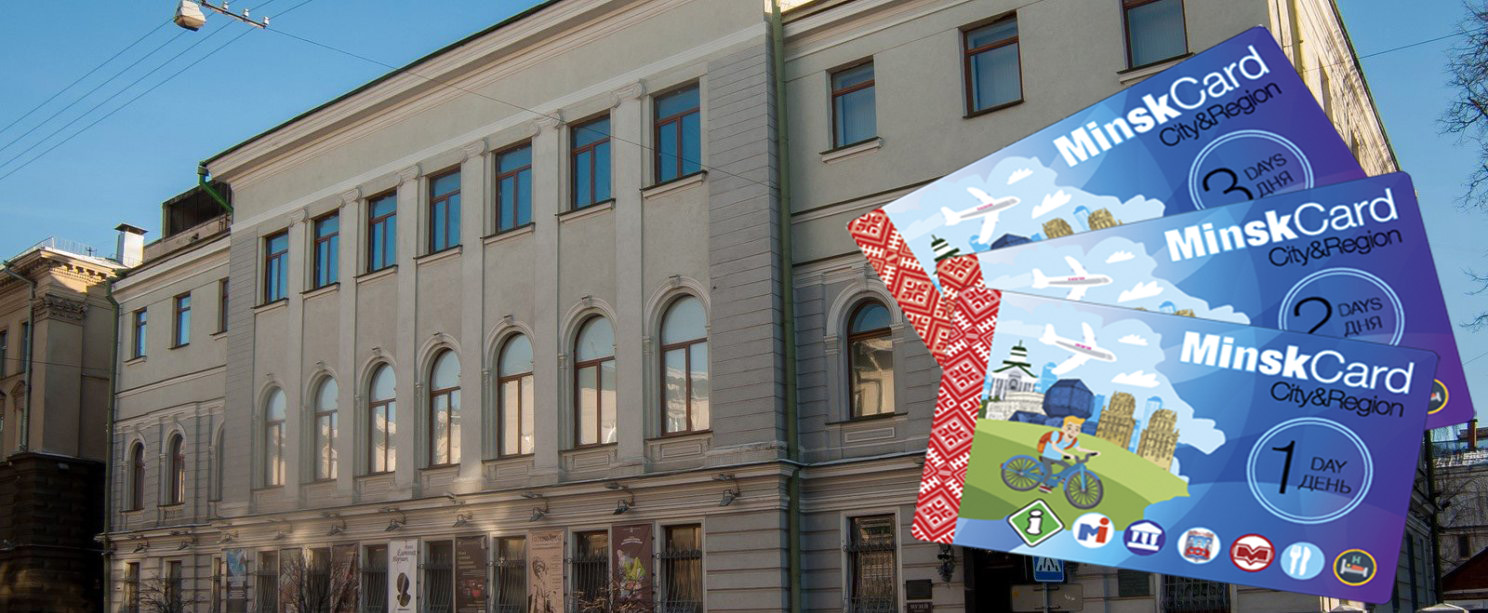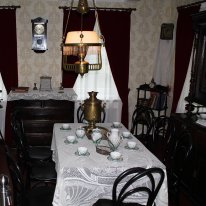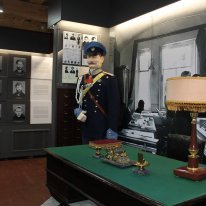Permanent exposition
The main part of the exposition is dedicated to the history of the city of Minsk at the end of the 19th century beginning of the 20th century and begins with a panorama of our city. This photo was taken from the side of Pischalovsky Castle. He opens the panorama to the Upper Town. Here you can see the spiers and roofs of buildings, which have survived today and those, which, alas, no longer exist.
The main and longest street of that time in Minsk was Zakharievskaya Street. Almost completely, it was built up with 2-3-storey houses, the first floors of which were occupied by shops, pharmacies, workshops, and then there were small wooden houses.
The main public transport in the XIX century. in Minsk there was an ordinary cart, and from 1892 through the city there were laid the rails of the horse-railway and the horse was launched.
In front of you is a photograph of the Mayor of Minsk at the end of the 19th century. - Karl Emerikovich Gutten-Chapsky. In 1890, at the age of 30, he was elected the city head of the city of Minsk. Under his leadership, the city was landscaped - thanks to short-term loans and personal deposits under interest in the municipal economy.
The museum restored the interiors of the two memorial rooms in which the congress was held, in which 9 delegates from four "Unions for the liberation of the working class" (Moscow, Kiev, Ekaterinoslav and Petersburg) and the Bund took part.
The exposition presents a copy of the Manifesto, as well as photographs of the drafters: P. B. Struve, S. Radchenko and A. Kremer, as well as the image of the meeting of the Congress from Monoszon Isakovich's painting (1907-1980) and the first exhibition of the museum in the 1920s.
In 1923, the solemn opening of the House Museum of the First Congress of the RSDLP took place: at 7 pm a festive rally of party, trade union organizations and representatives of military units was held at the house. Above the house was raised a red flag.
In the first years of the war, during the bombing of Minsk the museum was destroyed, all the exhibits were destroyed.
In January 1948, by decision of the Central Committee of the Communist Party (Bolsheviks) and the Council of Ministers of the BSSR, a decision was made to build a museum on the site of the house where the First Congress of the RSDLP was held. According to the project of the architect Volodko II, on the old foundation, by the autumn of 1948, the same house was restored.
In 1992, according to the decision of the Council of Ministers of the Republic of Belarus, the House Museum of the First Congress of the RSDLP was transferred to the Ministry of Culture of the Republic of Belarus and became a branch of the National Museum of History and Culture of Belarus (modern National History Museum of the Republic of Belarus), whose employees in 1995 created a new exposition ideas).
In 2007, the museum was closed for major repairs, after which it opened its doors to explore the new exposition dedicated to the history of the First Congress of the RSDLP and the exhibition hall.
Services of the museum:
The museum has a permanent exposition consisting of four rooms. In addition, temporary exhibitions are held in the exhibition hall, patriotic, enlightening and interactive events, and off-site lectures are organized in educational institutions.
Theme of lectures:
For younger school age: "Belarus is a country of treasures" - consideration of the topic of treasure and treasure hunt (search, types of treasures, etc.), information and photographic material about the most famous treasures of Belarus, legends and treasures that have not been found yet.
For the senior school age: "Minsk yesterday and today" - information about the city of Minsk in the late XIX - early XX centuries. The story of the city of Karole Czapski and the most famous city sights (parks, squares), streets (Zakharievskaya, Podgornaya, Gubernatorskaya, etc.), objects (residential buildings, churches, etc.) of the provincial city with photographic accompaniment through comparison old photographs and modern photographs of the relevant places.
For the senior school age: "Minsk innovative" - the continuation of the acquaintance with the provincial city of Minsk. A story about new phenomena in the cultural and social and social life of the city in the XIX - XX centuries. Information about the appearance in the city of public transport and the first cars, cinemas, electricity and telephone communications.
Avanced booking of excursion or lecture: +375 17 290 68 47.
For visitors
opening hours
Open: 11.00 – 19.00
Visitors enter:
11.00 – 18.30
Daily
Ticket desk open:
11.00 – 18.30
admission
Adults:
Overview of the permanent exposition – 5 BYN
Excursion – 10 BYN
Full-time students:
Overview of the permanent exposition – 3 BYN
Excursion – 4 BYN
Schoolchildren and specialised secondary school students:
Overview of the permanent exposition – 2,50 BYN
Excursion – 3 BYN
address
31a Praspekt Nezaleznasci, Minsk, 220005,
Republic of Belarus
Contacts
31a Praspekt Nezaleznasci, Minsk, 220005,
Republic of Belarus
+375 17 2906847










